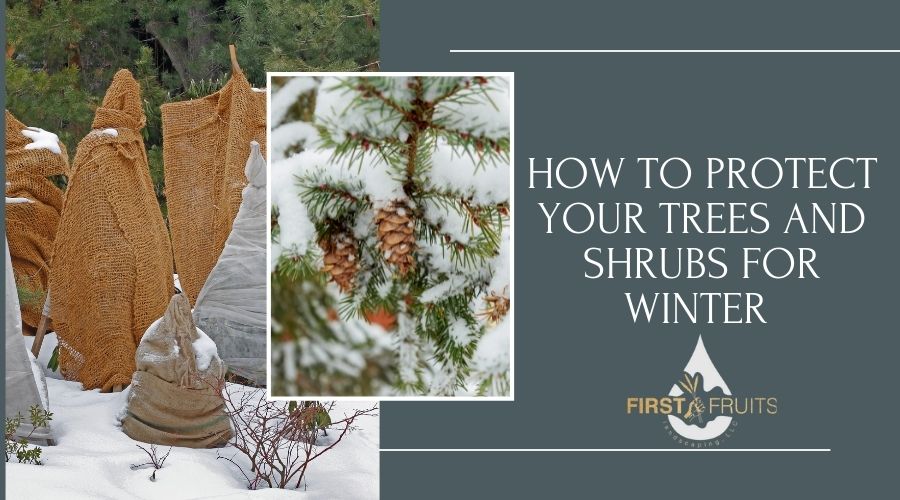Many trees, shrubs and plants are dormant in the winter when temperatures drop, the sun appears less frequently, and windy, extreme conditions settle in. However, even though they’re dormant, this doesn’t mean they won’t need some extra care.
How To Protect Your Trees and Shrubs for Winter
Insulation
Burlap, sheets, or blankets can be used for insulation during a cold snap, but its best to create a frame around the shrubs and trees to not overwhelm them with weight or break branches. The covering should be draped all the way to the ground to retain heat from the soil. Additional benefits of insulation can be the protection from hungry deer, rabbits, mice, and other wildlife that may come gnawing on the bark, branches, or foliage. Applying a 3–4-inch layer of mulch is another way to insulate and prepare for winter.
Irrigating
It may seem unnecessary to irrigate when shrubs and trees appear dormant, however, many still actively use water throughout the winter. It’s important to notice the levels of precipitation and remember to occasionally water when too much time goes by without a good rain or snow. Watering plants several hours before a freeze is an important step in protecting them as well. Frozen soil means plants can’t take in water to replace the moisture lost from evaporation and transpiration.
Shelter
Even in winter, foliage can be damaged by excessive sun and wind exposure. When planting, no matter the time of year, place new sensitive shrubs and plants in locations that will have shelter from these elements. If you have existing plants, shrubs and trees that need protection, you can build a simple barrier around them. Material can be stretched between poles or posts to offer a barrier, or a wooden cover can be constructed on the side that bares the brunt of the weather.
Maintain Health
Pruning in the spring and early summer can help plants, shrubs and trees fulfill their growth potential but don’t prune after mid-summer to prepare plants for change in seasons. Pruning stimulates growth and the new fragile branches can’t bare the cooling temperatures. Pruning can also delay dormancy. Young and newly planted shrubs and trees need extra care because their roots may not have grown enough to enter deeply into the native soil.
By taking some initial steps to protect your landscape, you can keep your favorite fragile plants, shrubs, and trees alive until they are well-established and can endure the winter temperatures alone. Keep in mind that early cold spells can damage plants that haven’t acclimated to the new temperatures so thinking ahead and planning can save you some hard work replacing beloved landscape in the future.
Get a Quote Today!
More Tips for Homeowners:
- Pros and Cons of Sprinkler and Irrigation Systems – And Why to Winterize
- Does Ground Cover Make a Lawn Easier to Maintain?
- 5 Fall Tasks for Your Landscaping
- End of Summer Lawn Maintenance: What to do in September in the Pacific Northwest
- 5 Landscaping Hacks Sure to Impress Home Buyers
- Surprising Things to Buy When Moving
- 4 Great Landscaping Practices After a Winter Storm

